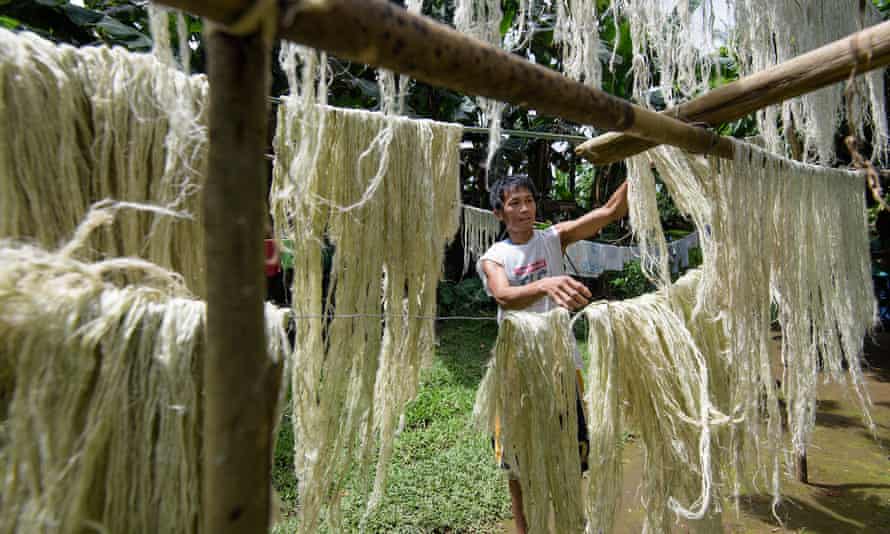This is a new post from the AIA which we belong to and are heavily engaged with as part of our mission to educate Christians and the general public on animal suffering issues, particularly those that are deeply flawed such as the animal testing model.
The UK Government has responded to Peter Egan’s petition – “Change the law to include laboratory animals in the Animal Welfare Act”.
AIA Director Dr Andre Menache has responded to the Government’s comments. (These are shown below in bold type).
Government Response:
The Government believes animal use for research remains important and The Animals (Scientific Procedures) Act 1986 (ASPA) provides specific protection for these animals..
There is an explicit exclusion under the Animal Welfare Act 2006 (AWA), to provide for the legitimate conduct of procedures on ‘protected animals’ for scientific or educational purposes that may cause pain, suffering, distress or lasting harm. The use of animals in scientific research remains a vital tool in improving our understanding of how biological systems work both in health and disease. Such use is crucial for the development of new medicines and cutting-edge medical technologies for both humans and animals, and for the protection of our environment.
The 1986 Act effectively enshrines animal suffering by means of legal definitions, whereby an animal experiment becomes a ‘regulated procedure’ licensed to potentially cause pain, suffering, distress or lasting harm to a ‘protected animal’, which encompasses all living vertebrates other than humans, under the responsibility of humans.
Thus, identical acts of deliberate animal cruelty potentially punishable by custodial sentencing under the Animal Welfare Act 2006 are essentially immune from prosecution under the Animals (Scientific Procedures) Act 1986.
The Animals (Scientific Procedures) Act 1986 (ASPA) is the specific piece of legislation which provides protection for these animals:
https://www.gov.uk/government/publications/consolidated-version-of-aspa-1986No animals may be used under ASPA if there is a validated non-animal alternative that would achieve the scientific outcomes sought. The protections for animals under ASPA include the need for three levels of licence for such procedures to occur, welfare standards which need to be met, and activities including inspection which assure compliance with ASPA. The Home Office is the department responsible for regulating the use of animals under ASPA. If any activity is found to be in breach of what is permitted under ASPA, then the AWA will apply.
The above statement represents a catch-22 situation : “No animals may be used under ASPA if there is a validated non-animal alternative that would achieve the scientific outcomes sought.”
If the scientific outcome sought is to study the effect of a chemical on a rat, then it is difficult to envisage how a non-animal alternative could replace the rat experiment. However, the use of rats is justified on the unscientific premise that animal models somehow are able to predict human outcome.
Validated non-animal alternatives do exist but are ignored by industry with impunity. Take the example of the human cell based method to replace the rabbit pyrogen test, developed by NIBSC researchers in 1988 (1). This non animal method (the Monocyte Activation Test) was validated in 2006 and yet is still ignored by certain sectors of industry (2). Please could you indicate the legal mechanism within the context of the ASPA that would oblige industry to use an existing validated non-animal method, including the imposition of fines and penalties. If you cannot find this information, it is probably due to the fact that it does not exist.
Details of how these regulations are administered and operationalised are set out in the Guidance on the operation of the Animals (Scientific Procedures) Act 1986 (ASPA) available at:
https://www.gov.uk/guidance/guidance-on-the-operation-of-the-animals-scientific-procedures-act-1986.Details of the code of practice for housing and accommodation of animals regulated under ASPA approved by Parliament which form a core pillar of compliance assurance activities under ASPA are available at:
Code of practice for the housing and care of animals bred, supplied or used for scientific purposes – GOV.UK (www.gov.uk).Animal testing is required by all global medicines regulators, including the UK’s Medicines and Healthcare products Regulatory Agency (MHRA), to protect human health and safety.
The regulatory requirement that all medicines be tested on animals to protect human health and safety is based on outdated laws, dating back to 1946 at the time of the Doctors’ Trial at Nuremberg. Science has moved forward since then by 75 years but the laws have not yet caught up with the science (3). To continue to ignore current science is tantamount to medical negligence (4).
Without the testing of potential medicines on animals the development, registration and marketing of new, safe, and effective medicines would not be possible. The animal species for animal testing of potential medicines are specifically chosen to give as much human relevant information as possible and to avoid species specific reactions which would not predict human effects. Many products which would not be safe or effective in humans are detected through animal testing thus avoiding harm to humans. Potential medicines fail in development for many reasons but the fact that medicines are stopped in development for reasons other than unsatisfactory animal testing does not mean that the testing is not essential.
Extraordinary claims (those above) require extraordinary evidence. Yet you have not provided a single peer reviewed scientific reference to support your claims. In contrast, there is a vast body of evidence-based science to demonstrate that no animal species can predict human response with respect to drug development or human diseases (5, 6, 7, 8).
The Government has a policy to limit the number of animals used in science through replacement, reduction, and refinement of research design – the ‘3Rs’. Applicants for licences must demonstrate that they have considered using non-animal alternatives as far as possible. Meanwhile the Government actively supports and funds the development and dissemination of techniques that replace, reduce and refine the use of animals in research (the 3Rs). This is achieved primarily through funding for the National Centre for the 3Rs (NC3Rs), which works nationally and internationally to drive the uptake of 3Rs technologies and ensure that advances in the 3Rs are reflected in animal research policy, practice and regulations. NC3Rs has committed £100 million. This includes almost £27 million in contracts through its CRACK IT Challenges scheme to UK and EU-based institutions, mainly focusing on new approaches for the safety assessment of pharmaceuticals and chemicals that reduce the use of animals.
From the 22 completed CRACK IT Challenges, 12 new products and services have been delivered for industrial and academic end-users. These include miniature wireless devices for recording neural activity in mice; novel human-relevant microphysiological systems and organ on-a-chip platforms for kidney, cardiac and neuronal toxicity assessment; and AI/ in silico modelling platforms for infection, welfare monitoring and toxicology studies. The MHRA work closely with the NC3Rs, bringing together stakeholders in academia, industry, government and animal welfare organisations to facilitate the exchange of information and ideas, and the translation of research findings into practice that benefits animals and science.
The 3Rs concept was indeed innovative when it was proposed in 1959. Today, the 3Rs concept is out of step with current science and technology.
The NC3Rs was launched in 2004 with an annual budget of £696k from the Department of Trade and Industry, the Medical Research Council (MRC), the Biotechnology and Biological Sciences Research Council (BBSRC)) and the Home Office (hence taxpayer money). Since then the budget has grown considerably, totalling five million pounds in research grants in 2017.
The stated mission of the NC3Rs is to “drive scientific and technological developments that replace, reduce or refine the use of animals in research (the 3Rs); ensure animal experiments are as robust and reproducible as possible; and provide the best welfare for laboratory animals”.
According to official Home Office statistics, a total of 2,778,692 animals were used in scientific procedures in 2004 (the year the NC3Rs was launched). This figure has risen by almost one million animals to reach 3,721,744 in 2017. Clearly, the NC3Rs mission to “replace, reduce or refine the use of animals in research” has been a huge disappointment.
Equally alarming is the fact that in 2017, the annual report of the NC3Rs acknowledged the “ongoing reproducibility crisis and concerns about the reliability of animal research”.
The fact that 85% of animal study results cannot be reproduced by other research teams (and sometimes even by the same research team) is a huge embarrassment to the animal research community (9). Could it get any worse ? Yes, because even if the methodology used to conduct the animal experiments was carried out to the letter, the results obtained would still not be predictive of human outcome, due to species differences between animals and humans (10).
Fortunately for the researchers, the public is unaware of this state of affairs, otherwise taxpayer funding and support for animal experiments would dry up very quickly.
It should be noted that the emphasis at the NC3Rs is not the replacement of animals as can be seen in their 2012 report, in which grants for replacement accounted for 33% of total funding.
In other words, two-thirds of their budget is allocated to reduction and refinement of animal experiments, rather than actual replacement. Following are some examples of the research projects funded by the NC3Rs in the fields of reduction and refinement:
- Researchers at Newcastle University were awarded £247,800 to study the assessment of pain using facial expressions in laboratory mice, rats, rabbits and macaques. The same University received £484,656 to assess pain in macaque monkeys used in neuroscience experiments and again (£380,748) to study the welfare of mice used in cancer research.
- Researchers at Imperial College, London, received £270,784 to study bacterial infections in mice.
- A researcher at Aston University received £152,048 to develop a less painful model of epilepsy in rats.
- The London School of Hygiene and Tropical Medicine was awarded £317,995 to study malaria in mice. Researchers at the University of Sheffield received £353,324 to study the relationship between nerve activity and blood flow in the brain of zebra fish.
We do not need three Rs, the only R required for human medical advancement is that of full replacement of a broken system by one that is relevant and predictive for human medicine. The sooner this message is understood and acted upon by society and government, the better for all concerned – human and animal.
To conclude the Government has no plans to amend the Animal Welfare Act (2006). We consider enabling the properly regulated use of animals in science is essential to improving the health and lives of humans and animals and to the safety and sustainability of our environment. Underpinning this is a strong commitment to a rigorous regulatory framework that fully implements the 3Rs and the continued development of non-animal alternatives.
Department for Environment, Food and Rural Affairs
The debate surrounding animal experiments will not go away until it is dealt with in a responsible and transparent manner. The main reason that animal researchers have managed to pursue their careers for so long is because of a lack of any scientific audit of their work. The general public and most members of parliament do not have the science background necessary to challenge the validity of the claims made by animal researchers. When faced with the mantra that animal research is a “necessary evil” the public has no choice but to accept the promises of future cures for human diseases.
One way forward is EDM 175, which calls on the UK Government to mandate a rigorous public scientific hearing, judged by independent experts from the relevant science fields, to stop the funding of the now proven failed practice of animal experimentation and increase funding for state-of-the-art human-based research, such as human-on-a-chip and gene-based medicine, to prioritise treatments and cures for human patients and stop the suffering of laboratory dogs and other animals (11).
Click this link to view the response online:
https://petition.parliament.uk/petitions/591775?reveal_response=yes
The Petitions Committee will take a look at this petition and its response. They can press the government for action and gather evidence. If this petition reaches 100,000 signatures, the Committee will consider it for a debate.
The Committee is made up of 11 MPs, from political parties in government and in opposition. It is entirely independent of the Government. Find out more about the Committee: https://petition.parliament.uk/help#petitions-committee
Thanks,
The Petitions team
UK Government and Parliament
References for AIA Response:
- https://www.nibsc.org/science_and_research/biotherapeutics/cellular_immunology/pyrogenic_pro-inflammatory_activities.aspx
- https://www.altex.org/index.php/altex/article/view/2234
- https://bmcmedethics.biomedcentral.com/articles/10.1186/1472-6939-13-16
- https://pubmed.ncbi.nlm.nih.gov/26364776/
- https://peh-med.biomedcentral.com/articles/10.1186/1747-5341-4-2
- https://www.bmj.com/content/348/bmj.g3387
- https://pubmed.ncbi.nlm.nih.gov/14988196/
- https://www.futuremedicine.com/doi/full/10.2217/pme.11.89
- https://www.nature.com/articles/s41598-020-73503-4
- https://pubmed.ncbi.nlm.nih.gov/23372426/
- https://edm.parliament.uk/early-day-motion/58611/public-scientific-hearing-on-animal-experiments















